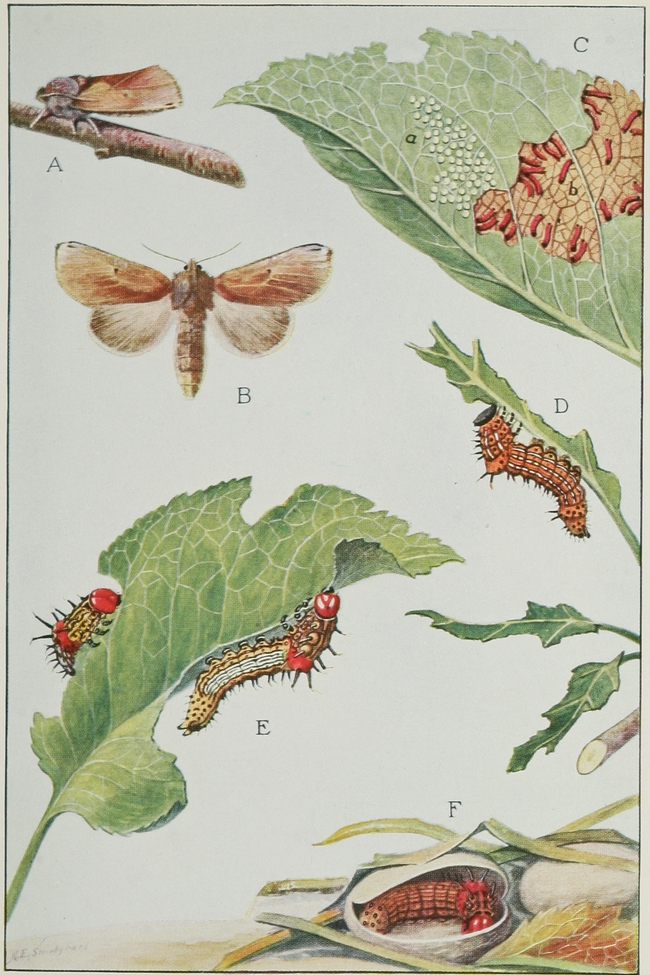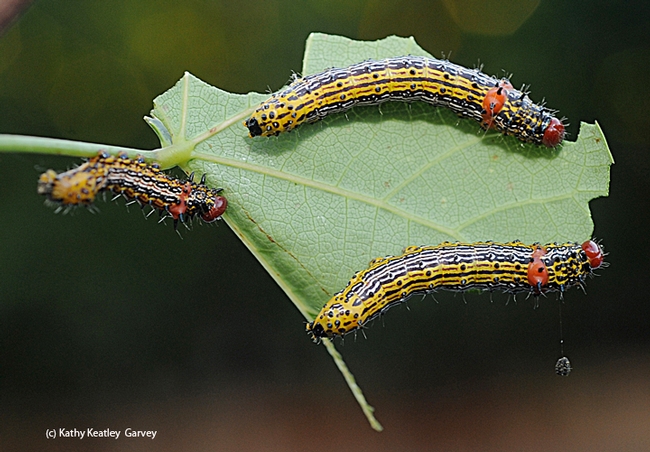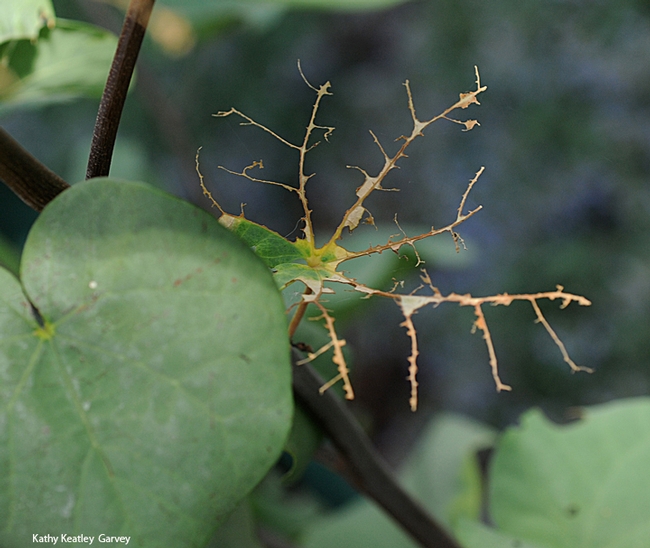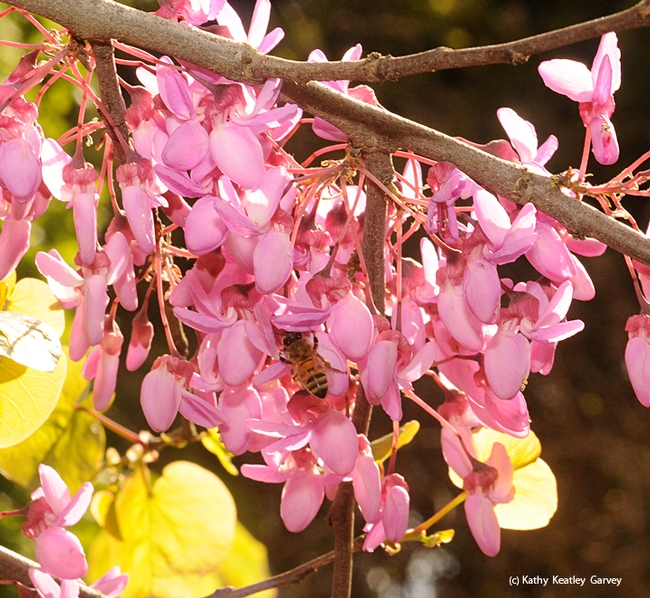
Take the immature form (caterpillar) of the moth, Schizura concinna, family Notodontidae. We first spotted this caterpillar on our Western redbud tree (Cercis occidentalis) in September 2010.
It has a red hump. The common name: The redhumped caterpillar.
Art Shapiro, distinguished professor of evolution and ecology at UC Davis, told us that the red hump contains a defensive formic acid gland. "They hold their anal prolegs, which are not useful for walking, in the air and thrash their rear ends in unison when disturbed. This is the ONLY defoliator of redbud around here, and is very common. It also attacks walnut and a variety of other chemically-distinctive trees that other things don't eat, as a rule."
We wondered if these little thrashing visitors should concern us. "The damage is minor, and I strongly advise against spraying; hand-picking can be used if control is deemed necessary, but they feed so late in the season that there is no actual harm to the tree," he told us. "The moth is very nondescript. It holds its wings wrapped around the body cylindrically and looks remarkably like a cigarette butt, though it is probably 'imitating' a broken-off twig. Despite authoritative commentary to the contrary, they have two broods a year here but are usually seen in fall. The species is native on both coasts and oddly absent in most of the mid-continent."
We thought we might see redhumped caterpillars on our liquidambar (sweet gum) trees that we planted more than two decades ago. We never have.
What we did see this week is that the UC Statewide Integrated Pest Management Program (UC IPM) has revised its Pest Notes: Redhumped Caterpillar. A recent UC IPM blog described the caterpillar as a "familiar pest on fruit and nut trees such as plum, almond, cherry, and apple, as well as on ornamental trees like liquidambar and birch. It can reach high populations in California's Central Valley, sometimes defoliating entire trees."
The Pest Note, co-authored by entomologists Emily Symmes, UC IPM and UC Cooperative Extension, Sacramento Valley, and Steve Dreistadt, UC IPM, describes the pest, its life cycle, and the damage rendered. You can read about a variety of management techniques.
Ah, the redhumped caterpillar...
And if you're curious about common names and scientific names of insects, the Entomological Society of America (ESA) maintains a Common Name Database, "an essential reference for anyone who works with insects. It includes more than 2,000 common names and is searchable by common name, scientific name, author, order, family, genus, and species."
Have a suggestion for a common name? You can propose it on the ESA form. Names are reviewed by the Committee on the Common Names of Insects and voted on by the ESA Governing Board.
It's probably unlikely, however, that redhumped caterpillar, will undergo a name change any time soon. That red hump is so descriptive!
Attached Images:


